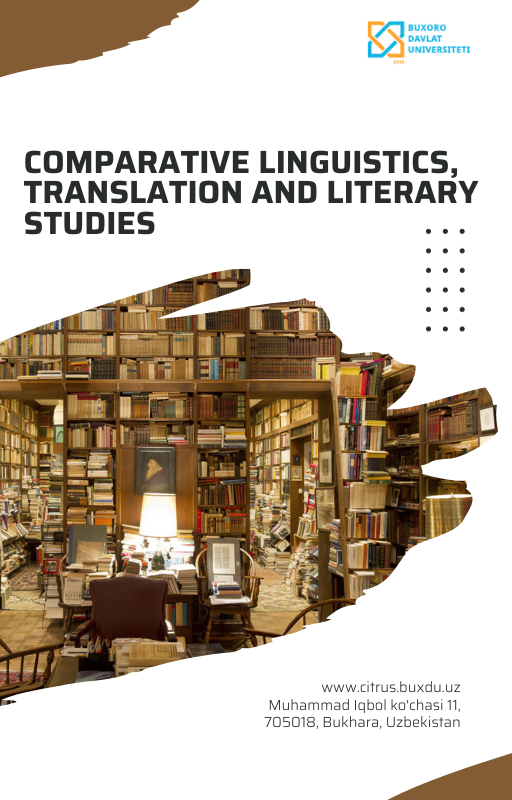Comparative Linguistic Features of Kyrgyz, Russian, and English in Global Contexts
DOI:
https://doi.org/10.70036/cltls.v2i1.14Keywords:
Comparative Linguistics, Kyrgyz, Russian, English, GlobalizationAbstract
Background: Comparative linguistics is vital for understanding intercultural communication, especially in a globalized world. Knowledge Gap: Limited studies explore the interplay of Kyrgyz, Russian, and English with global trends. Aims: This study examines linguistic features and cultural influences across these languages. Results: Kyrgyz exhibits agglutinative morphology, Russian emphasizes a rich case system, and English relies on strict syntax. Globalization impacts all three, with lexical borrowing and syntactic shifts. Novelty: The research highlights cultural and historical influences alongside modern linguistic evolution. Implications: Findings enhance cross-cultural understanding and contribute to effective global communication strategies.
References
Alekseev, A., Tillabaeva, A., Kabaeva, G. D., & Nikolenko, S. I. (2024). Syntactic Transfer to Kyrgyz Using the Treebank Translation Method. https://doi.org/10.48550/arXiv.2412.13146
Alekseev, A., & Turatali, T. (2024). KyrgyzNLP: Challenges, Progress, and Future. https://doi.org/10.48550/arXiv.2411.05503
Baker, A. E., & Hengeveld, K. (2012). Linguistics (Vol. 14). John Wiley & Sons. https://books.google.fr/books?hl=fr&lr=&id=DlXbmjQH6SwC&oi=fnd&pg=PR13&dq=linguistics&ots=uS5aVRbTLV&sig=sOif1JbbRzQLMkCXq4Sikwjaimg
Campbell, L., & Janda, R. (2000). Introduction: Conceptions of Grammaticalization and Their Problems. Language Sciences, 23(2–3), 93–112.
Cassirer, E. A. (1945). Structuralism in Modern Linguistics. Word, 1(2), 99–120. https://doi.org/10.1080/00437956.1945.11659249
Croft, W. (2004). Cognitive Linguistics. Cambridge University Press, 2, 105–132.
Diewald, G. (2002). A Model for Relevant Types of Contexts in Grammaticalization. Typological Studies in Language, 49, 103–120.
Emilbekova, G. (2015). Expressing Modality in English and Kyrgyz Languages. Vestnik Bishkekskogo Gumanitarnogo Universiteta, 2, 26–30.
Evans, V. (2012). Cognitive Linguistics. WIREs Cognitive Science, 3(2), 129–141. https://doi.org/10.1002/wcs.1163
Gile, D. (2009). Basic Concepts and Models for Interpreter and Translator Training. John Benjamins Publishing.
Gries, S. T. (2009). What Is Corpus Linguistics? Language and Linguistics Compass, 3(5), 1225–1241. https://doi.org/10.1111/j.1749-818X.2009.00149.x
Guhl, M. (2010). Towards a Syntactic Analysis of Russian -sja. Russian Linguistics, 34(3), 261–283. https://doi.org/10.1007/s11185-010-9061-8
Hois, J., & Kutz, O. (2008). Counterparts in Language and Space-Similarity and [Sscr]-Connection. Formal Ontology in Information Systems, 266–279. https://ebooks.iospress.nl/volumearticle/4802
Karpov, A., Kipyatkova, I., & Ronzhin, A. (2011). Very Large Vocabulary ASR for Spoken Russian with Syntactic and Morphemic Analysis. Twelfth Annual Conference of the International Speech Communication Association. https://www.researchgate.net/publication/221488663
Kazanina, N. (2017). Predicting Complex Syntactic Structure in Real Time: Processing of Negative Sentences in Russian. Quarterly Journal of Experimental Psychology, 70(11), 2200–2218. https://doi.org/10.1080/17470218.2016.1228684
Kozuev, D. I., Beksultanova, G. A., & Jumalieva, G. E. (2021). Structural-Semantic Features of English and Kyrgyz Complex Sentences with Adverbial Clauses. Proceedings of the European Proceedings of Social and Behavioural Sciences, 871–878. https://doi.org/10.15405/epsbs.2021.11.117
Lehmann, C. (2002). New Reflections on Grammaticalization and Lexicalization. Typological Studies in Language, 49, 1–18.
Miller, L. D. (1993). Making the Connection with Language. The Arithmetic Teacher, 40(6), 311–316.
Novick, J. M., Trueswell, J. C., & Thompson‐Schill, S. L. (2010). Broca’s Area and Language Processing: Evidence for the Cognitive Control Connection. Language and Linguistics Compass, 4(10), 906–924. https://doi.org/10.1111/j.1749-818X.2010.00244.x
Sylvén, L. K., & Thompson, A. S. (2015). Language Learning Motivation and CLIL: Is There a Connection? Journal of Immersion and Content-Based Language Education, 3(1), 28–50. https://doi.org/10.1075/jicb.3.1.02syl
Toksonalieva, R. M., Musurmanova, G. S., Toksonalieva, A. M., Koshmatova, Z. Z., & Yuldashev, M. B. (2019). Development of International Intercultural Communications of Kyrgyz People Through the Learning of Non-Native Languages. In E. G. Popkova (Ed.), Ubiquitous Computing and the Internet of Things: Prerequisites for the Development of ICT (Vol. 826, pp. 789–798). Springer International Publishing. https://doi.org/10.1007/978-3-030-13397-9_82
Zhanybaeva, S. T. (2011). Comparative and Contrastive Typology of English and Kyrgyz Language Verbs That Express Past and Future Tenses. Alatoo Academic Studies, 6(2), 229–239.
Downloads
Published
How to Cite
Issue
Section
Citation Check
License
Copyright (c) 2025 Bayzhigitova Aizada Asranovna

This work is licensed under a Creative Commons Attribution 4.0 International License.
Copyright
Authors who publish with Comparative Linguistics Translation and Literary Studies agree to the following terms:
- Authors retain copyright and grant the journal right of first publication with the work simultaneously licensed under a Creative Commons Attribution 4.0 International License that allows others to share the work with an acknowledgment of the work's authorship and initial publication in this journal.
- Authors are able to enter into separate, additional contractual arrangements for the non-exclusive distribution of the journal's published version of the work (e.g., post it to an institutional repository or publish it in a book), with an acknowledgment of its initial publication in this journal.
- Authors are permitted and encouraged to post their work online (e.g., in institutional repositories or on their website) prior to and during the submission process, as it can lead to productive exchanges, as well as earlier and greater citation of published work.
License
This work is licensed under CC BY 4.0






